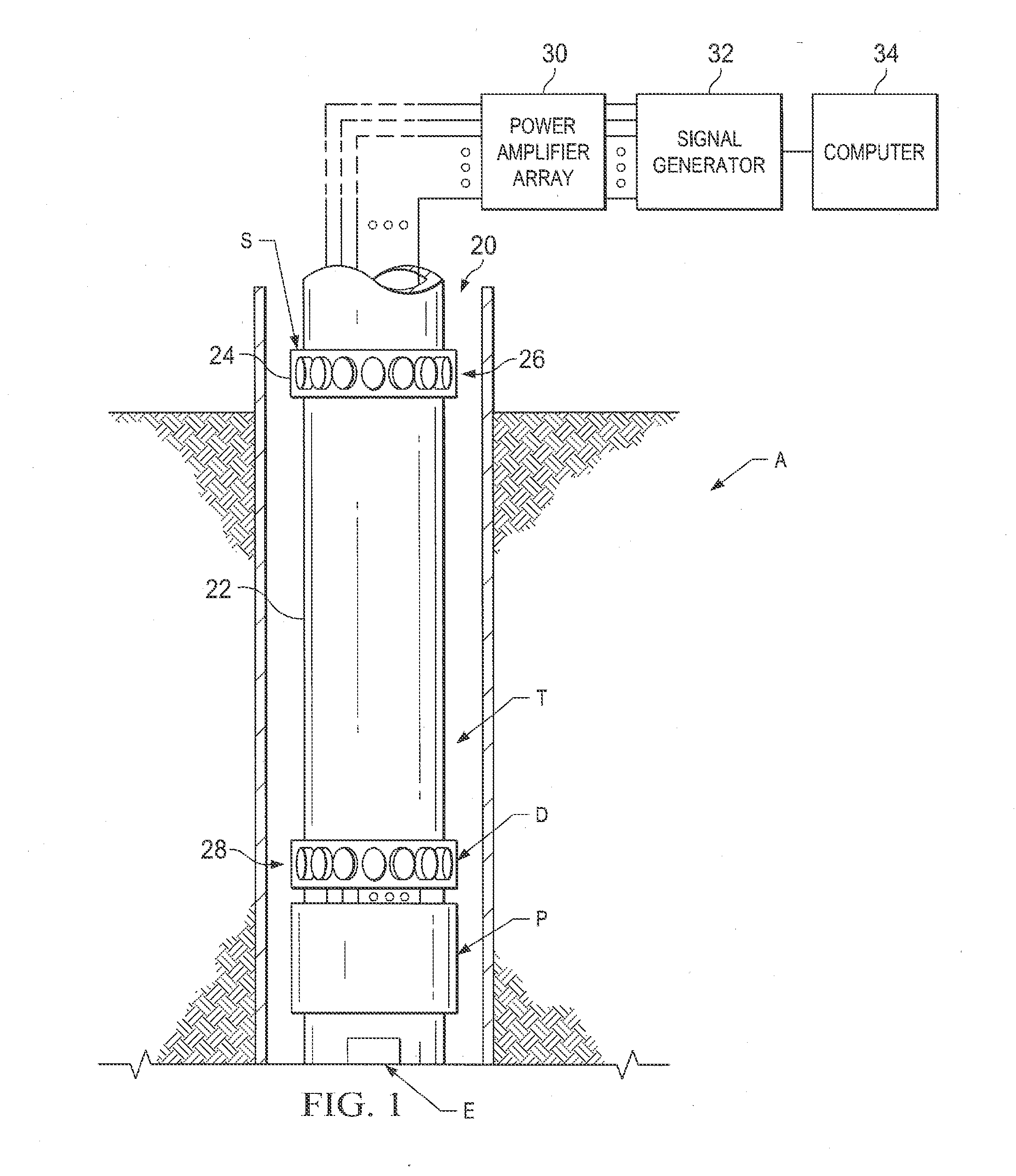Wireless power transmission to downhole well equipment
- Summary
- Abstract
- Description
- Claims
- Application Information
AI Technical Summary
Benefits of technology
Problems solved by technology
Method used
Image
Examples
Embodiment Construction
[0028]In the drawings, the letter A designates generally an apparatus according to the present invention for wireless power transmission to downhole well equipment. The apparatus A transmits acoustic guided Lamb waves are used to transfer power inside a well using production tubing or other conduit T, which may be well casing or drill string, as the transmission medium for transfer of operating power to downhole equipment E shown schematically in a wellbore 20. The downhole well equipment E may take the form of sensors located in the wellbore 20 or mounted on the tubing T. The sensors acquire real-time data from reservoir formations of interest adjacent the wellbore 20 for continuous or automated reservoir management. The downhole well equipment E may also take the form of electromechanical flow control mechanisms such as valves to adjust fluid flow in wellbore 20.
[0029]The apparatus A includes a surface transducer module S which has a mounting frame or collar 24 containing an array...
PUM
 Login to View More
Login to View More Abstract
Description
Claims
Application Information
 Login to View More
Login to View More - R&D
- Intellectual Property
- Life Sciences
- Materials
- Tech Scout
- Unparalleled Data Quality
- Higher Quality Content
- 60% Fewer Hallucinations
Browse by: Latest US Patents, China's latest patents, Technical Efficacy Thesaurus, Application Domain, Technology Topic, Popular Technical Reports.
© 2025 PatSnap. All rights reserved.Legal|Privacy policy|Modern Slavery Act Transparency Statement|Sitemap|About US| Contact US: help@patsnap.com



